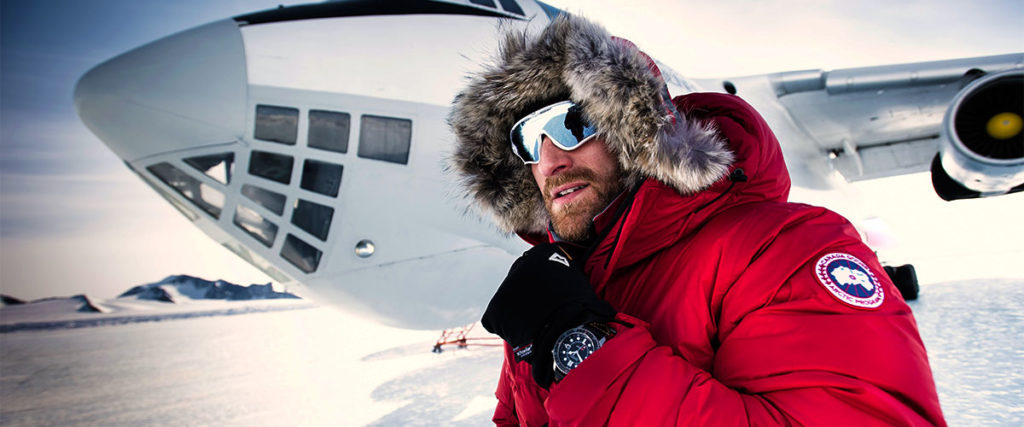One of the world’s leading polar explorers, Ben Saunders has ventured beyond the limits of human potential, from the North Pole to the South Pole. He sits down to share his remarkable journey.
Everyone’s got a North Pole. A formidable challenge or goal that seems to bait us time and time again to try our very best to overcome, despite the overwhelming obstacles and improbability of success it proposes. For some, those goals may be of a sensible nature, such as paying off your student loan debt or putting a down payment on a home. For others, they are a little more risky, like launching your own business, or jumping out of a moving plane. For explorer Ben Saunders, however, it’s all about looking inward and exploring the sheer breathtaking limits of human potential. “My career has been defined by the pursuit of human limits, rather than geographical ones,” he says of his endless pursuit of the out-of-reach. “I wasn’t trying to find out where the North or South Poles were, and I’ve never named a mountain or glacier, but I have stepped into uncharted territory in the human sense – and that process has been immensely rewarding.”

Photo Credit: Andy Ward
Ben’s start in life didn’t spell out a career on the outer edges of physical achievement. “There is nothing extraordinary about me. A doctor told me when I was 11 that I had flat feet and would never be a runner,” he told the Guardian in 2004. “Then, when I was 18, I ran the London Marathon in under three-and-a-half hours, then the New York marathon, a couple of ultra-marathons and a 53-mile endurance race. I realised I could run.”
The elder of two boys, Ben grew up in Devon and Kent, England, and dreamed of becoming an astronaut. While he never quite made it to the moon, he has made a career out of exploring some of the earth’s furthest corners, becoming the youngest to ski solo to the North Pole, and is the current holder of the record for the longest solo Arctic journey by a Briton. “I still think that Antarctica or the high Arctic are as close as you can get to setting foot on an alien planet without leaving the Earth’s atmosphere,” he says, jovially. Like many explorers before him, Ben was educated at the Royal Military Academy Sandhurst. He is a global brand ambassador for Land Rover and Canada Goose, an ambassador for The Prince’s Trust, a patron and fellow of British Exploring, a fellow of the Royal Geographical Society, and an acclaimed keynote speaker, described by TED (where he has spoken three times) as “a master storyteller.”
You might also like Explore the Unimaginable with Adventurer Paul Niel
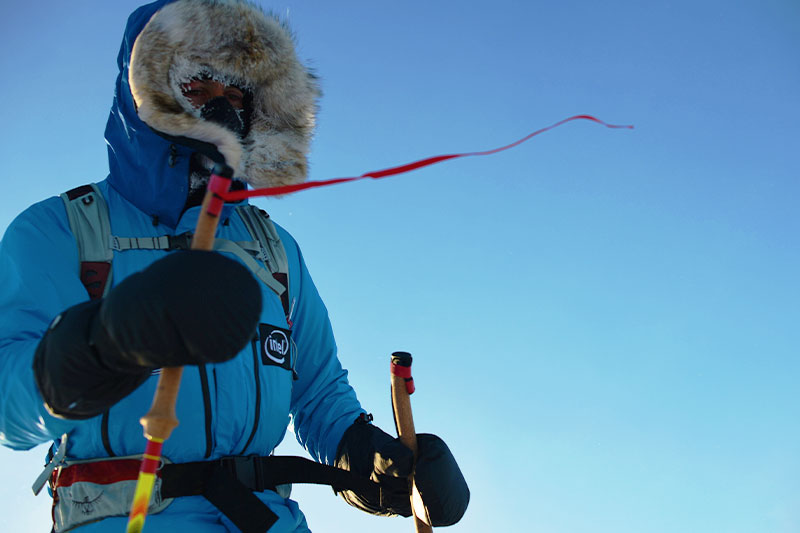
Photo Credit: Andy Ward
As one of the world’s leading polar explorers, Ben has led 12 major expeditions and covered more than 7,000 km on foot in the Polar Regions since 2001. When asked what expedition he’s most proud of, he cites his 2013-2014 Scott Expedition, during which he and his teammate, Tarka l’Herpiniere, became the first to complete the 2,900 km return journey to the South Pole that had previously defeated Sir Ernest Shackleton and claimed the lives of Captain Scott and his men in 1912. In the process he broke – and still holds – the world record for the longest ever polar journey on foot. For him, it was a journey into the minds and lives of his heroes. “I’m inspired by some of the extraordinary leaders that broke new ground in the polar regions a century or so before me: Shackleton, Scott, Nansen and Amundsen.”
In a TED Talks video with over 1 million views, Ben refers to this gruelling four-month attempt to retrace Scott’s ill-fated expedition as “the hardest 105 days of my life.” Yet, it was this as-yet-unconquered challenge that attracted him to the journey in the first place. “I was fascinated by the fact that this journey hadn’t been finished yet. Most people in the UK know Captain Scott’s name, yet most people were unaware that the journey he died attempting still hadn’t been completed. Scott and his last two teammates died having covered nearly 1,600 miles on foot in Antarctica, and that record stood until 2014. To me, it was as if the Ironman triathlon record had been set in 1912 and, despite a century’s worth of innovation and advancement, no one had been able to break it,” he enthuses. “It still represented the high watermark of sheer human endeavour and endurance in the toughest place on earth. In completing it, we travelled further than any human being had ever travelled before under their own motive power in the polar regions.”
In the run-up to an expedition such as this, it’s a given that explorers like Ben have to put a lot of time, sweat and energy into the preparation. In the lead up to the aforementioned Scott Expedition, for example, you would often find him dragging car tyres around London in an 18-month bid to build up his stamina. Over the years, he’s thrown himself into everything from Olympic lifting and ultramarathons, to training expeditions in Greenland and Scotland. Less obvious, but no less important in terms of preparation, is also the amount of effort that goes into fundraising and sponsorship deals – support that is absolutely integral in getting him to the start line. “In many ways, the expedition is the reward for making it through those incredibly challenging months and years of preparation. I made this mistake on my very first North Pole attempt, racking up a huge amount of debt that took me years to pay off.”
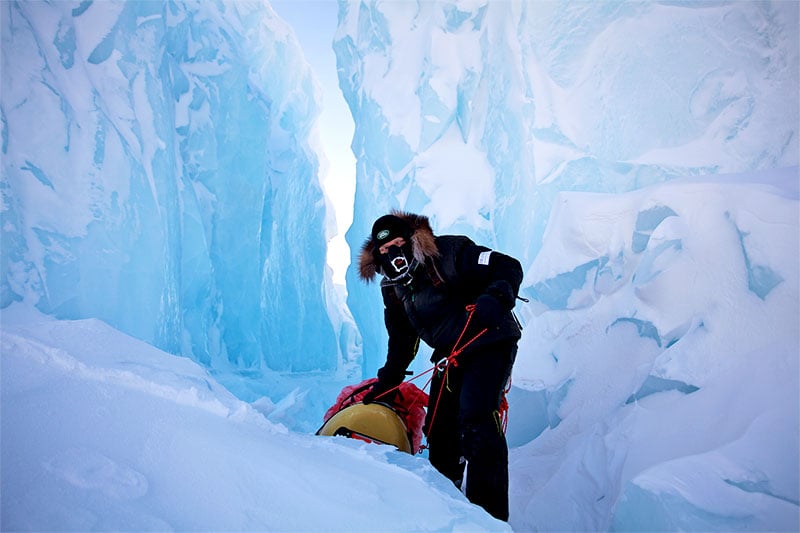
Photo Credit: Andy Ward
So, what does a typical day on an expedition to the South Pole even look like? According to Ben, the routine varies, depending on whether it is a team or a solo expedition, but the days always start the same: with waking up and lighting the stove. “Melting enough snow for the day takes a lot of time, perhaps two hours in the morning and an hour in the evening. Breakfast is a freeze-dried meal in a bag, usually some sort of muesli or granola made with powdered cream for extra calories, all of which is washed down with a protein shake and another hot drink before we start the day.” Once breakfast is over, Ben adds at least two litres of hot drinks to drag behind him on his sledge. “I normally travel for 90-minute sessions with a short break in between to eat, drink and answer the call of nature. There were two of us on the Scott Expedition, resulting in us taking turns to navigate as we travelled for an average of nine to ten hours each day.” Before they can head off to bed in their newly pitched tents, however, they have to dig up enough snow to melt in order to produce 24 hours’ worth of water. Dinner is then in the form of yet another freeze-dried meal. In total, the duo consumed just over 6,000 calories per day each.
During these long, arduous expeditions, Ben would drag around a 200 kg sled filled with all the food, equipment and fuel needed for the duration of the trip, stopping to eat every 90 minutes for fuel. 200 kg may sound improbably heavy, but getting the sled down to that weight is no easy feat. On one occasion Ben has to resort to throwing away something as small as his toothbrush in a last-ditch effort to lighten the load, resulting in him and his expedition partner, Pen Hadow, going a whole two months without brushing their teeth. On another occasion, he was quoted as surviving a full three months in just one set of underwear. “I have always been obsessed with saving weight because the lighter the sledge, the higher my chances of success. I’ll remove the labels from clothing, the metal from zips, cut the handles off of toothbrushes and make sure that all the food is freeze-dried.” There are, of course, exceptions to this rather stringent weight strategy. “I drag two very small teddy bears along with me on my expeditions. One which was given to me by a school friend years ago (he’s called Barnaby and has been to the summit of Everest as well as both poles), and a small penguin that was given to me by my mum.”
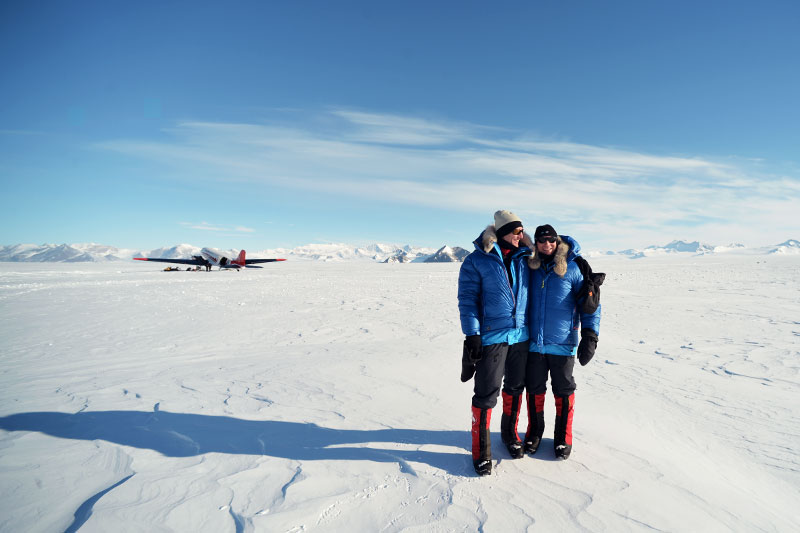
Photo Credit: Andy Ward
Like in life, however, it doesn’t matter how much you plan and prepare – things can still go wrong. In 2017, Ben was famously forced to give up his quest to cross Antarctica unassisted, thanks to treacherous conditions and low rations, echoing Sir Ernest Shackleton’s words that it was better to return home as a ‘live donkey’ than a ‘dead lion.’ Facing those sorts of decisions, isolated, tired and alone takes every ounce of self-belief. “Almost every expedition I have been on has involved near-daily moments of this sort of self-doubt. I’m familiar enough with that feeling now to recognise that it is normally temporary and that when I feel like giving up, I am normally nowhere near my actual physical limits. The ability to motivate myself has been vital, particularly on solo expeditions, and I think it is a skill that anyone can develop. My theory is that self-belief (a combination of courage and confidence) is a malleable human quality that responds to stimulus. It’s the same as a muscle or physical strength: the more you stress it and stretch it, the stronger it becomes.”
For Ben, the biggest battles have always been mental rather than physical, and have normally involved “having to overcome my own fear or self-doubt.” When asked if he ever feels pangs of loneliness during these long and incredibly taxing expeditions, he has an interesting take on the difference between geographical isolation and the actual feeling of loneliness. “I’m profoundly aware of my physical isolation on solo expeditions. I have skied solo to the North and South Poles, and for many weeks on both of these expeditions, I was the most isolated human being on the planet. The closest people to me were on the International Space Station. But, I never felt lonely. I’ve always had huge numbers of people following expeditions, and friends and family missing me back home. I think there are lonelier people on the streets of London than I was in my tent.”
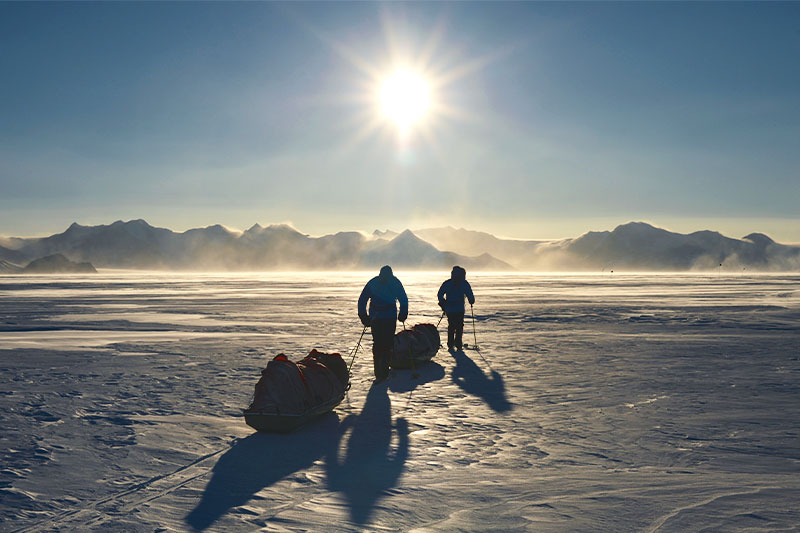
Photo Credit: Andy Ward
When you’ve been where Ben has been, where do you possibly go next? “As far as dragging sledges go, I feel I have achieved everything I wanted to achieve in that world,” he says. “For me, the next chapter involves thinking bigger and focusing on the sort of legacy I want to leave. I’ve just started working with a company called White Desert that specialises in Antarctica travel, aviation and logistics. One day, I hope to be able to bring small teams of young people to Antarctica. My goal is to create groups of six students in their late teens or early 20s, each with a specialist interest, for example, a young scientist, an artist, a filmmaker, together with six mentors, and give them the opportunity to document and share experiences in Antarctica with as large an audience as possible. Human beings are a narrative species and are inspired by stories rather than by data, so these projects will focus on creating and telling stories, and sharing the vital lessons these places can teach us all.”
For someone so enamoured with testing just how far a human can be pushed physically and psychologically, it’s hard, however, to imagine that he’ll stay put for long. In the words of the late, great British Antarctic explorer Sir Ernest Shackleton, “Difficulties are just things to overcome, after all.”
Banner Photo Credit: Martin Hartley
Related Articles
Journey Through The Ages: Explorer Bruce Parry Returns
Inspiring a New Asia For Youths Through Adventure
British Adventurer Rob Lilwall Shares His Thoughts on Embracing Challenges
